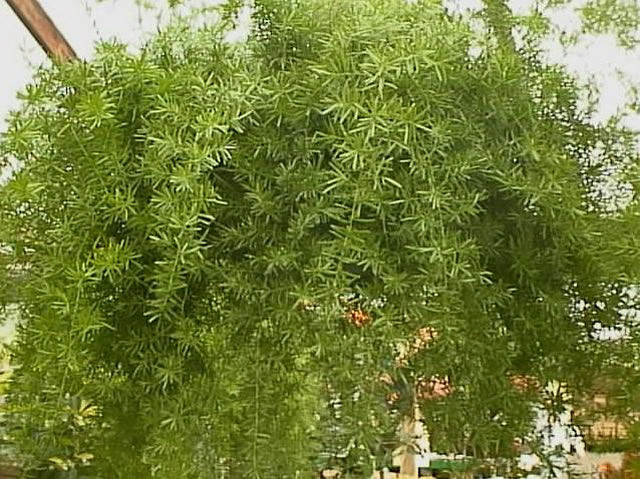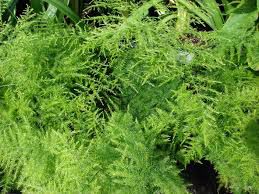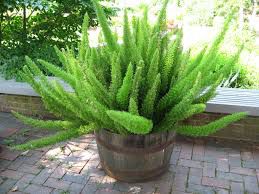BY LORI MURRAY , with appreciation to the late Audrey Paterson
Ferns are one of the most diverse groups of plants in the world, with thousands of species spread across the most temperate parts of the globe. They are a popular choice for shade gardens because they add a soft elegance to the landscape, and in nature ferns can offer benefits to the soil and to the environment.
The root system of a fern, typically a long thin, horizontal web of rhizomes beneath the soil’s surface, adds moisture to the soil. It also stabilizes the soil and thus prevents erosion. Ferns are also popular ornamental plants and florists would be lost without them. They use the fronds in both bouquets and in wreaths, much as we who are fortunate enough to have fern readily available in our yards use it with our cut flowers.
Three varieties of Asparagus Fern do well in the Valley. They are not, however, really fern, but belong to the lily family. Some are good container plants and others are useful in flower arrangements.
Asparagus Sprengeri is the most commonly found. (This is the variety most commonly called asparagus fern.) It grows best in filtered light, but will tolerate some sun. It is vigorous and has long graceful stems covered with soft, thin, needle-like leaves. Sprengeri is very effective in a hanging basket. It will also do well in a planter box, but if left too long without thinning, its roots can actually create enough pressure to crack the box. Each piece grows from a nut or small bulb beneath ground.
Asparagus Meyerii, also called Foxtail Fern, forms pale green cylindrical plumes resembling the arched tail of a fox. The stems are stiff and the “tails” wave in the Valley breezes. Its growth forms in stout clumps and springs from the soil level.
This plant requires periodic removal of bare stems as old stems die and are replaced by new ones. This fern will take full sun and does extremely well in a container. It actually prefers to be somewhat pot-bound.
Asparagus Setacceus has a more delicate and lacy appearance. Growth is on long, rather rambling stems, but this is an attractive variety to use with cut flowers such as roses. If offered the proper surface, it will climb with its small thorns that help it grasp surfaces.
Plant fern in well-drained soil. It likes high humidity and will thrive here if kept moist and shaded. (But, as with any other plant, do not allow fern to stand in water or it will die.)
Fern can be used as a focal point or to soften the edges of a building of patio. It can fill in an empty area in a charming way while the different cut-leaf designs and varying tones of green can add another dimension to your landscape.






